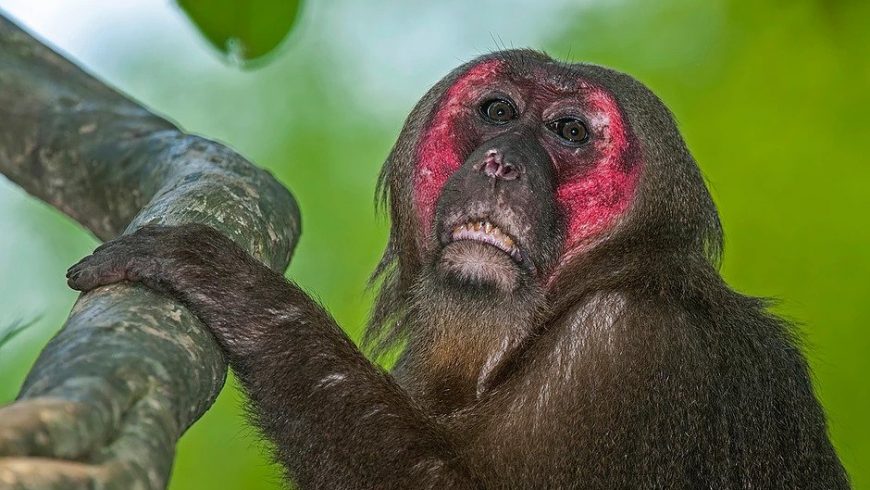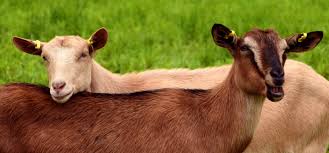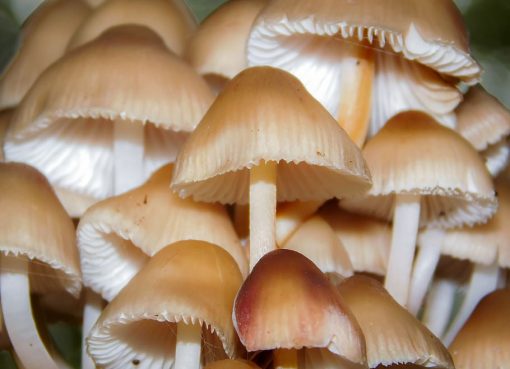Primate Conservation Challenges and Prospects in Northeast India
Text by Dilip Chetry & Rekha Chetry
Photos by Udayan Borthakur
Primate diversity in the seven sisters of NE
The northeast region of India comprising of the eight states namely Assam, Arunachal Pradesh, Meghalaya, Mizoram, Manipur, Tripura, Nagaland and Sikkim is an integral part of the eastern Himalaya bio-diversity hotspot and as such very rich in bio-diversity. The region supports a lion’s share of the India’s bio-diversity. We are primarily describing here the primate diversity of seven states of the region excluding Sikkim.
Primates are a comparatively small but important component of the region’s amazing faunal diversity. The seven states of northeast India is home for 12 out of the total 26 primate species in India. These 12 species belongs to three families (Lorisidae, Cercopitheciade and Hylobatidae) and four genera ( Nyctecebus, Macaca, Trachypithecus and Hoolock).
Slow loris (Nyctecebus bengalensis ) is the sole representative species of Lorisidae family in the region and it is also the only nocturnal species of primate in this part of the country.
The family cercopithecidae has highest 9 species of which 3 species are from subfamily colobinae and 6 species are from subfamily cercopithecinae. The three colobines are Golden langur (Trachypithecus geei), Capped langur (Trachypithecus pileatus) and Phayre’s leaf monkey Trachypithecus phayrei). Remarkably, Golden langur is endemic to Assam and southern Bhutan and not found in any other parts of the country including the remaining states of northeast.
Rhesus macaque (Macaca mulatta), Assamese macaque (Macaca assamensis), Pigtailed macaque (Macaca leonine), Stump-tailed macaque (Macaca arctoides), Arunachal macaque (Macaca munzala) and White cheeked macaque (Macaca luecogenys) are the six members of the subfamily cercopithecinae.
The third family Hylobatidae is represented by two species namely Western Hoolock gibbon (Hoolock hoolock) and Eastern Hoolock gibbon (Hoolock leuconedys). These two species of gibbons represent the ape group in entire India.

A family of Western Hoolock gibbons
List of Primate Species found in the 7 states of northeast India and their conservation status:
| Sl. No. | Common name | Scientific name | WPA,1972* | IUCN,2020** |
| 1 | Slow loris | Nyctecebus bengalensis | Schedule- I | Vulnerable |
| 2 | Rhesus macaque | Macaca mulatta | Schedule- II | Least Concerned |
| 3 | Assamese macaque | Macaca assamensis | Schedule- II | Near Threatened |
| 4 | Stump-tailed macaque | Macaca arctoides | Schedule- II | Vulnerable |
| 5 | Pig-tailed macaque | Macaca leonina | Schedule- II | Vulnerable |
| 6 | Arunachal macaque | Macaca munzala | Schedule- ? | Endangered |
| 7 | White-cheeked macaque | Macaca luecongenys | Schedule-? | ? |
| 8 | Capped langur | Trachypithecus pileatus | Schedule- I | Vulnerable |
| 9 | Golden langur | Trachypithecus geei | Schedule- I | Endangered |
| 10 | Phayre’s leaf monkey | Trachypithecus phayrei | Schedule- I | Endangered |
| 11 | Eastern Hoolock gibbon | Hoolock leuconedys | Schedule- I | Vulnerable |
| 12 | Western Hoolock gibbon | Hoolock hoolock | Schedule- I | Endangered |
*WPA,1972=Indian Wildlife Protection Act,1972;**IUCN=International Union for Conservation of Nature.
The Brahmaputra & primate species distribution
The Brahmaputra river system is an active physical barrier to the dispersal of many species in the region and has shaped the bio-geography of the species in the entire northeast region. Influence of the Brahmaputra has been well reflected in the primate geography of northeast region vis a vis India. The distribution of five species namely Western Hoolock gibbon, Eastern Hoolock gibbon, Stump-tailed macaque, Pigtailed macaque and Phayre’s leaf monkey in northeast region are restricted to the south bank of the Brahmaputra river.
Among these 5 species again distribution of Phayre’s leaf monkey can be found only in Barak valley in southern part of the state of Assam, Mizoram , Tripura . Likewise distribution of Eastern Hoolock gibbon is confined to only Sadiya sub division of Tinsukia district in Assam and Lower Dibang Valley, Lohit, Namsai and Changlang district in Arunachal Pradesh.

Eastern Hoolock gibbon
Contrary to these species, Golden langur is found only in the north bank of the river Brahmaputra in western Assam. In addition to Golden langur two other species namely Arunachal macaque and White cheeked macaque have their distribution in the north bank of the Brahmaputra river system.
The Arunachal macaque is found in Tawang district while the White cheeked macaque is found in Anjaw district of Arunachal Pradesh. On the other side remaining 4 species viz. Slow loris, Capped langur, Rhesus macaque and Assamese macaque is found on both north and south bank of the Brahmaputra.

The mighty Brahmaputra acts as a physical barrier to dispersal of several species.
A general account on primate habitat
The tropical evergreen forest, sub-tropical forest, moist deciduous forest, sal forest, dipterocarpus forest, bamboo forest, secondary forest, village woodlots are the primary habitats of different primate species in the state. Again temples in different corners of the region support populations of primate species like Assamese macaque, capped langur and rhesus macaque. However, in number, populations of temple Rhesus macaque outnumber the populations of other two species. Moreover, Rhesus populations are quite common in village and cityscapes.
Conservation issues
Global warming, climate change, loss of bio-diversity are some of the biggest challenges in front of mankind. Directly or indirectly, humans on major part are responsible for this crisis. Due to various activities of people bio-diversity all over the world is eroding rapidly. Extinction of species has been accelerated to manifolds in the recent time. Primates which are naturally found in tropical and sub-tropical forests of Asia, Africa and South America are facing all kinds of threats. Rapid loss of tropical forests all over the world has threatened the primates to great extent and many species of primate are on the verge of extinction. Fortunately, no primate species is reported to be extinct in the recent times.
Threats to conservation in northeast
The primate community in northeast India is also facing the same set of threats i.e. habitat loss, habitat fragmentation, and hunting. To some extent other human induced fatalities like deaths of primates due to dog predation, electrocution, and vehicular accident are also posing threats to primates in different parts of the region. Keeping primate as pet also practiced in remote corners which are also affecting primate community.

A macaque being kept as pet
Natural habitats of all kind of wildlife including primate are declining rapidly over the period of time rapidly in the entire region. Thus extensive deforestation resulting from encroachment, agricultural expansion, developmental activities (town, industry, road, dam etc. ), wanton felling of trees, reduced jhum cycles is indeed a major concern and the biggest challenge as far as conservation of primate is concerned in this part of the country. Habitat alteration due to cash crop viz. orange, ginger, cardamom, rubber, tea etc. cultivation is also a principal threat.

Camramum plantation on the hill slopes of Arunachal Pradesh
Habitat fragmentation is another major threat that has threatened the survival of primate in many cases. Local extinction of both Golden langur, and Eastern Hoolock gibbon from a number of fragmented pockets have taken place in the recent past in Assam. These episodes of extinctions are really alarming as far as conservation of the two species go because at present Golden langur is in the IUCN list of world’s top 25 most endangered species of primate while Eastern Hoolock gibbon in Assam is represented by a single population only.
It is beyond doubt that 10 other species of primates in the region are also badly influenced by this crisis. Unexpectedly we are still losing our natural habitats due to rampant destruction of forest. More and more populations of primate are compelled to lead a trapped life in isolated fragmented habitats. All these have really made the conservation issue of primate more challenging one day by day.
In entire distribution range of primates in the region especially in the hilly states traditional hunting is continued to be a challenge in the conservation of primate to certain extent. Some tribes of the region hunt primate for meat, some for ornaments and few other tribes for trophies and medicine etc. Habitat loss and shrinkage has compelled different primate species in various areas to live in close proximity to human settlement. This situation in turn has resulted in human–primate conflict ( more frequently man-rhesus macaque conflict) in many areas. In conflict affected areas it is becoming a critical management issue. Monkey menace in urban landscapes is very common and both man and monkeys are trying to adjust to the situation.
Another emerging crisis associated with the man –primate (in most cases man –rhesus macaque) proximity in human habitations is increasing the probability of transmission of zoonotic diseases in man and anthroponotic diseases in primate.
Climate change and primate conservation
Along with these it is becoming a big challenge to safeguard the future of primates in the region in the changing climatic conditions. Climate change has made all natural cycles unpredictable thereby creating erratic floods deficit and irregular rainfall, landslides etc. in the region. Erosion is also a very serious issue in many parts of the region more specifically in Assam. All these natural calamities impact human life leading to increased human induced pressures on primate habitat.
Socio-economic breakdown has compelled a large number of people to depend on nearest forest resources generating pressures on primates and other wildlife. Again sudden eruption of social unrest as well as prevailing insurgency in several corners many times put detrimental impacts on bio-diversity at large.
Adding glamour to primates for conservation
The primates have been receiving a rather neglected status in general in the region with little bit of exception in case of Hoolock gibbon and golden langur. It is very sad that till now primates are not in the priority of conservation agenda of the seven states of the region, compared to charismatic species like rhino, elephant and tiger. But everything is not so dark and there are rays of hope also. The positive side amidst this lack of concern is that the seven states has as many as 61 protected habitats to sustain different primate species.

Hoollongapar Gibbon Wildlife Sanctuary
Above all, in Assam two protected habitats have been declared taking two species of primate as target species of conservation. The Hoollongapar Gibbon wildlife sanctuary (HGWS) in Jorhat district of the state was declared as a sanctuary in the year 1997 named after Hoolock gibbon. This is the only sanctuary in India to be named after any primate species. The most remarkable feature of this sanctuary is that it supports 7 species of primates out of the total 12 in the region. This is the highest diversity of primate for any protected habitat in the country. The other protected habitat Chakrashila wildlife sanctuary in Dhubri and Kokrajhar districts of Assam which was declared as a sanctuary in the year 1994. Chakrashila is targeting long term conservation of Golden langur and till now it is the only protected habitat for the species in India. In addition to these, there are few areas already in the list of proposed protected area. We hope that these areas will be declared as protected habitats as proposed at the earliest and this will definitely help in the conservation of primate and other wildlife.
Primate research and conservation
Another most prospective aspect is expansion of primate research in the region. New researches are helping the ongoing conservation efforts giving essential scientific input. Latest molecular and genetic studies have given new insight to primate conservation biology in the state. Conservation of primate has attained a new height with the active participation of Aaranyak and many NGOs in the recent past. Aaranyak and other NGOs have shouldered the heavy responsibility of educating and the communities about the importance of primate conservation. It is because of their tireless efforts today Hoolock gibbon and Golden langur are familiar among the common populace and many times communities are coming forward for the conservation of the both the species and their habitats.
In the arena of wildlife tourism of the region also primate based tourism involving the charismatic Hoolock gibbon and Golden langur has created its own space and this is a very positive sign from the conservation perspective of primates in Assam as well as in six other states of the region. Training and capacity building of the frontline forest staffs by the Aaranyak in collaboration with forest departments of different states specially Assam, Arunachal Pradesh and Nagaland has given a new dimension to the entire conservation practice of primate and other wildlife of the region.
Further, conservation breeding programme for different primate species taken up by zoos in the region is adding further prospects to primate conservation. It is expected that this venture will help in the conservation of the species concerned in the days ahead. The Guwahati Zoo cum Botanical garden has started captive breeding program for Golden langur and this initiative on the part of the zoo has gained appreciation from conservationist. Mizoram is the first state to start the conservation breeding of Western Hoolock gibbon at Aizawl Zoological Park in 2006. In Arunachal Pradesh Biological Park, Itanagar has also launched captive breeding program of Eastern Hoolock gibbon from 2007 which is another benchmark in the conservation movement of primate in the region.
Another important aspects of conservation of primates specially Hoolock gibbon is the successful translocation of trapped gibbons in Dello village in Lower Dibang district of Arunachal Pradesh to Mehao Wildlife Sanctuary during 2011 to 2013 by Wildlife Trust of India in collaboration with Arunachal Forest Department. In fact translocation has remained as the last option for saving the future of gibbon as well as other primate trapped in small fragments in different parts of the region.

A Hoolock gibbon at Itanagar Zoo, Arunachal Pradesh
Traditions supporting primate conservation
As mentioned above hunting of primate is a traditional practice among some communities in northeast India. Yet here in the same region, there some strong conservation friendly traditional practices which are directly or indirectly helping in the conservation of primates and other wildlife. The three groups namely Idu Mishimi, Digaru Mishimi and Miju Mishimi of Mishimi community in Dibang Valley, Lohit, Anjaw and Namsai districts of Arunachal Pradesh never hunt Hoolock gibbon by adhering strongly to their traditional belief systems which preaches hunting of gibbon as sin. Indeed there is immense scope for exploration and exploitation of positive vibes of traditional ethos for the benefit of conservation of wildlife.

A family belonging to Digaru Mishmi tribe in Arunachal Pradesh, who believe hunting of gibbons as a sin.
The hope amidst the crisis
Rising involvement of the print and electronic media in covering the wildlife related issues including primate is very much encouraging. Sum and substance is that though our primates are in great crisis at present however, everything is not lost for them. And we are hopeful that despite of all the challenges the people of northeast with strong co-operation from our governments will be able to safeguard the future of our closest relatives.
But at this very moment the COVID-19 pandemic is the biggest challenge in front of the world community. The sudden outbreak of COVID-19 pandemic has impacted every arena of human life and livelihood in every nook and corner of the earth. With large section of people losing their livelihood due to the current pandemic it is expected that there will be substantial increase in dependence of remaining natural resources. All existing forests pockets are going to more vulnerable to all sorts of exploitation. All wildlife including primate will be in more danger. Like all other aspects, conservation of bio-diversity will going to be a more challenging task in the post-COVID world.
In this critical scenario very well designed futuristic strategies will be needed for the greater benefit of mankind and nature. Nevertheless the sweetest bonus of ensuring conservation of primates will be that we will be able to leave behind a much better, healthier and richer environment for our own children.
The most pertinent point here is that conservation of primate means conservation of forests and which ultimately means sustenance of life. It is high time for the mankind to understand that “Nurturing nature is nurturing life”.
All photo copyright © Udayan Borthakur (www.udayanborthakur.com)
About the Authors:

Dr. Dilip Chetry is a primatologist, working as the Head of Primate Research & Conservation Division of Aaranyak. He is also the Vice Chair of IUCN SSC Primate Specialist Group, South Asia Section and Executive member in the Small Ape section of IUCN.

Dr. Rekha Chetry is an Assist. Prof. in the Dept. of Zoology at Jawaharlal Nehru College, Bodo, Assam, India.
N.B. Republished Article from ecoNE online magazine.




